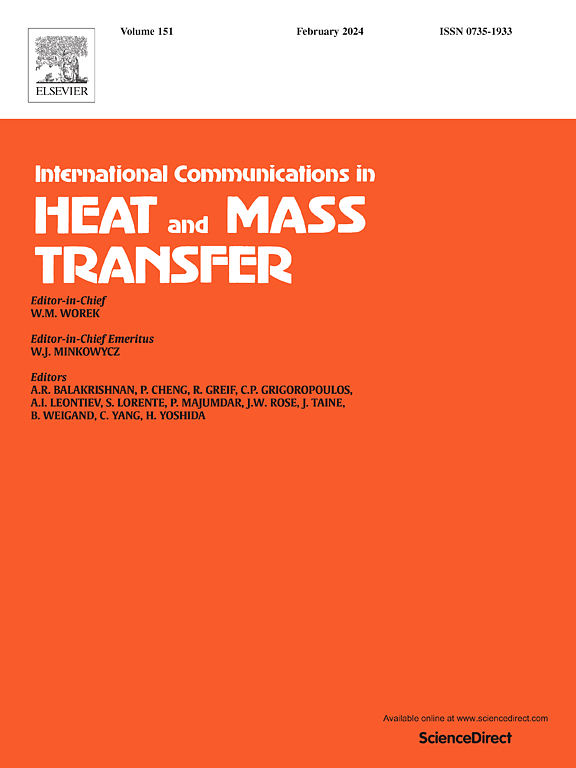Multi-objective optimization of electrochromic windows in office buildings for different climatic conditions
IF 6.4
2区 工程技术
Q1 MECHANICS
International Communications in Heat and Mass Transfer
Pub Date : 2025-02-05
DOI:10.1016/j.icheatmasstransfer.2025.108669
引用次数: 0
Abstract
Electrochromic windows stand out as a subset of smart windows that effectively manage sunlight, thereby contributing significantly to energy efficiency and occupant comfort. In this paper, a methodology is presented for determining the optimal properties of electrochromic windows in six distinct cities characterized by varying climates. The cities under examination include Tehran, Sari, Yazd, Shiraz, Esfahan, and Tabriz. The optimization method uses a multi-objective approach to optimize various design variables for electrochromic windows, such as thickness of glass panes, gas layer properties, and window-to-wall ratio. Additionally, it identifies optimal illuminance, heating, and cooling setpoints to enhance electrochromic window performance. The objectives under consideration include the total annual electricity consumption (E) and the Predicted Percentage of Dissatisfied (PPD) coefficient. To facilitate this optimization, Non-Dominated Sorting Genetic Algorithm II (NSGA-II) is employed, generating a Pareto front. The Discomfort Glare Index (DGI) parameter is subsequently computed at the Pareto points to determine the final optimal solution. The results demonstrate that in Esfahan, the implementation of optimum electrochromic windows yields the most substantial reductions in electricity consumption (27.6 %) and PPD coefficient (29.7 %). Furthermore, Krypton gas is identified as the most suitable gas for deployment in optimal electrochromic windows.
求助全文
约1分钟内获得全文
求助全文
来源期刊
CiteScore
11.00
自引率
10.00%
发文量
648
审稿时长
32 days
期刊介绍:
International Communications in Heat and Mass Transfer serves as a world forum for the rapid dissemination of new ideas, new measurement techniques, preliminary findings of ongoing investigations, discussions, and criticisms in the field of heat and mass transfer. Two types of manuscript will be considered for publication: communications (short reports of new work or discussions of work which has already been published) and summaries (abstracts of reports, theses or manuscripts which are too long for publication in full). Together with its companion publication, International Journal of Heat and Mass Transfer, with which it shares the same Board of Editors, this journal is read by research workers and engineers throughout the world.

 求助内容:
求助内容: 应助结果提醒方式:
应助结果提醒方式:


